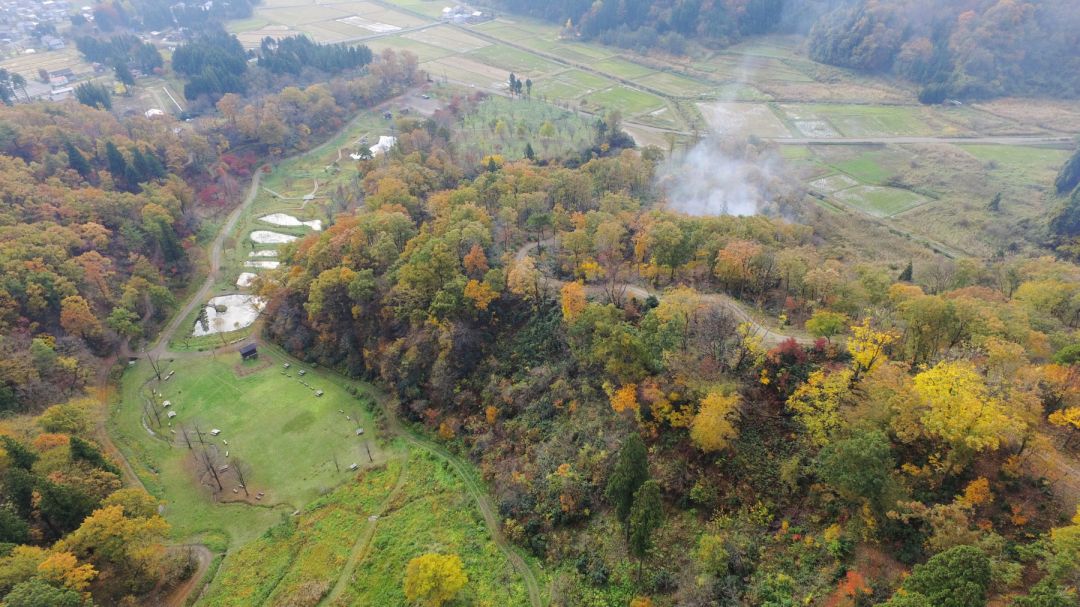16. Yukiguni Botanical Gardens
Yukiguni Botanical Gardens
The Yukiguni (“Snow Country”) Botanical Gardens contain more than 850 species of plants native to the snow-heavy satoyama areas of Nagaoka. Satoyama (literally “village mountains”) are areas in the foothills where people used to farm, forage, and gather firewood. The use of natural resources was carefully managed in a sustainable way that helped conserve local ecosystems. With the advance of technology and depopulation of rural areas, satoyama no longer play a part in people’s daily lives. Left alone, these delicate ecosystems revert to regular forestland, increasingly becoming overgrown and damaged by invasive species, which threatens their biodiversity. The Yukiguni Botanical Gardens are dedicated to preserving a balanced satoyama environment without any alpine, coastal, non-native, or ornamental plants.
Navigating the Gardens
Seasonal flowers that are currently in bloom are marked on a large map (in Japanese) to the right of the ticket counter. The map also has photos showing what birds, butterflies, and other insects might be encountered. Exploring every path through the Yukiguni Botanical Gardens may take up to five hours, so checking the seasonal map is recommended before planning a route within the available time.
A Haven for Native Species through the Seasons
Various native plants bloom in the gardens from spring to autumn. These include yukiwariso primrose (Hepatica nobilis var. japonica), dogtooth violet, mountain cherry, and rabbit-ear iris in spring; Ezo hydrangea, bellflower, silk tree, and several types of lilies in summer; and willow herb, red spider lily, Japanese beautyberry, gentian, and Japanese silverleaf (tsuwabuki) in autumn. Many birds, insects, and other animals can be seen throughout the year, including close to 80 species of birds, 45 species of butterflies, 40 species of dragonflies, and forest animals such as rabbits and tanuki raccoon dogs.
3,000 cherry blossoms decorate the satoyama in spring
Queen of wild grass, Glaucidium palmatum
King of wild grass, golden-rayed lily

100,000 red spider lilies

Autumn leaves that color the autumn of Satoyama
Yukiwariso Primrose: A Symbol of Nagaoka
One of the plants that the Yukiguni Botanical Gardens are particularly focused on preserving is yukiwariso (literally “flower that breaks through the snow”), which is also known as hepatica or bird’s-eye primrose. These flowers are one of the first to appear as the snow melts, making them a symbol of the coming spring. They bloom low to the ground in pink, white, and bluish-purple, blanketing the satoyama slopes as a colorful herald of the changing seasons. Yukiwariso flowers have become rarer due to habitat loss and overpicking, but in Nagaoka they are carefully cultivated at the Yukiguni Botanical Gardens, Myohoji Temple, and the Echigo Hillside Park.

Yukiwariso Primrose
A Place for the Community
The Yukiguni Botanical Gardens were created in 1984 to serve the community and promote nature conservation. The staff are primarily volunteers, including many senior citizens dedicated to passing on their knowledge to younger generations. Special public courses are held at the gardens on topics that appeal to children. Fireflies can be seen from mid-June to early July during special night hours. Birdwatching events under the auspices of the Nagaoka Wild Bird Society take place in spring and autumn.

Evening of Fireflies(mid-June to early July )
The Yukiguni Botanical Gardens are open between mid-March and mid-November from 9:00 a.m. to 5:00 p.m. Admission is 500 yen for adults, 50 yen for students, and free for pre-school children. Guided tours are available with prior reservation by phone. Please note that tours take one to two hours and are conducted in Japanese.
*This English-language text was created by the Japan Tourism Agency.
Click here for homepage
Top page
